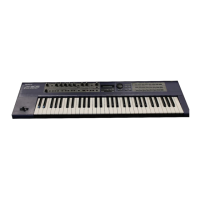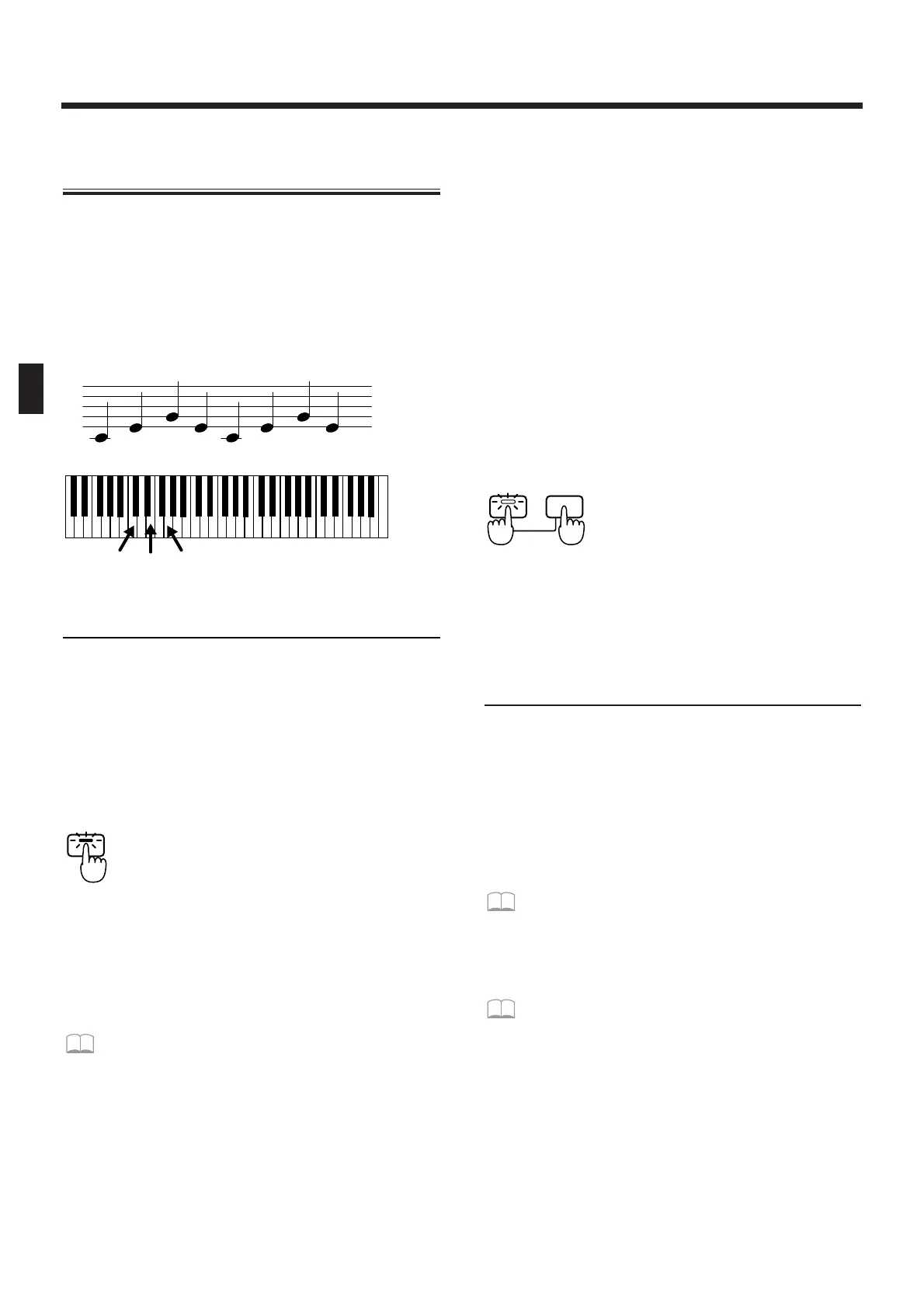Pressing Chords to Produce
Arpeggios (Arpeggiator)
By using the arpeggiator, you can produce an arpeg-
gio (broken chord) simply by holding down the chord.
For example, if you hold down a C major chord as fol-
lows, an arpeggio of C3, E3, G3, E3, C3, E3, G3.... will
be played.
In the case of
Arpeggio Style: 1/4
Octave Range: 0
fig.2-42(=MC fig.5-1)
Playing Arpeggios
1. Use [PART SELECT] and PART [1]–[R] to
select the part to be used to play arpeg-
gios.
2. In the ARPEGGIATOR/RPS section, press
[ARP].
The indicator lights, and the arpeggiator will be
turned on.
fig.2-43
3. When you play the keyboard, any chord
you play will be sounded as an arpeggio.
* The tempo of the arpeggio will be synchronized to the
tempo of the pattern. If you wish to change the speed of
the arpeggio, change the tempo of the pattern.
☞ “Adjusting the Tempo” (p. 31)
●●●●●●●●●●●●●●●●●●●●●●●●●●●●●●●●●●●●●●●●●●●●●●●●●●●●●●●●●●●●●●●●●●●●●●●●●●●●●●●●●●●●●●●●●●●●●●●●●●●●
Parts that can be used for arpeggios
The part(s) that will sound the arpeggio will depend
on the Key Mode.
Single: Arpeggios can be played on the current part.
Split: Regardless of the [UPPER]-[LOWER] selec-
tion, arpeggios can be played only on the
lower part.
Dual: Arpeggios can be played on either the upper
or the lower, or on both the upper and lower.
For details refer to “Selecting the Part in Dual
Mode Which Will Play the Arpeggio
(Arpeggio Destination)” (p. 26)
●●●●●●●●●●●●●●●●●●●●●●●●●●●●●●●●●●●●●●●●●●●●●●●●●●●●●●●●●●●●●●●●●●●●●●●●●●●●●●●●●●●●●●●●●●●●●●●●●●●●
●●●●●●●●●●●●●●●●●●●●●●●●●●●●●●●●●●●●●●●●●●●●●●●●●●●●●●●●●●●●●●●●●●●●●●●●●●●●●●●●●●●●●●●●●●●●●●●●●●●●
Arpeggio Hold
If you hold down [HOLD] and press [ARP], and get
the indicator to start blinking, the arpeggio will con-
tinue sounding even after you take your fingers off the
keyboard. If you play a different chord or notes while
the arpeggio is being held, the arpeggio will change
accordingly.
To cancel Arpeggio Hold, hold down [HOLD] and
press [ARP] simultaneously once again.
fig.2-44
Also, if you connect a pedal switch (sold separately) to
the Hold Pedal jack, you can hold the arpeggio as long
as the pedal switch is pressed.
●●●●●●●●●●●●●●●●●●●●●●●●●●●●●●●●●●●●●●●●●●●●●●●●●●●●●●●●●●●●●●●●●●●●●●●●●●●●●●●●●●●●●●●●●●●●●●●●●●●●
Creating an Arpeggio Pattern
When you wish to make arpeggiator settings, you will
first select an Arpeggio Style. When you select a style,
optimal values will be set for the four parameters
“Accent Rate,” “Motif,” “Beat Pattern,” and “Shuffle
Rate.” You can adjust parameters such as Accent Rate
and Octave Range to modify the pattern to your taste.
If this is not enough, you can also make more detailed
settings.
☞ “Making More Detailed Settings” (p. 26)
The arpeggiator settings you modify can be stored as a
User Style.
☞ “Saving Arpeggio Settings (Arpeggio Write)”
(p. 28)

